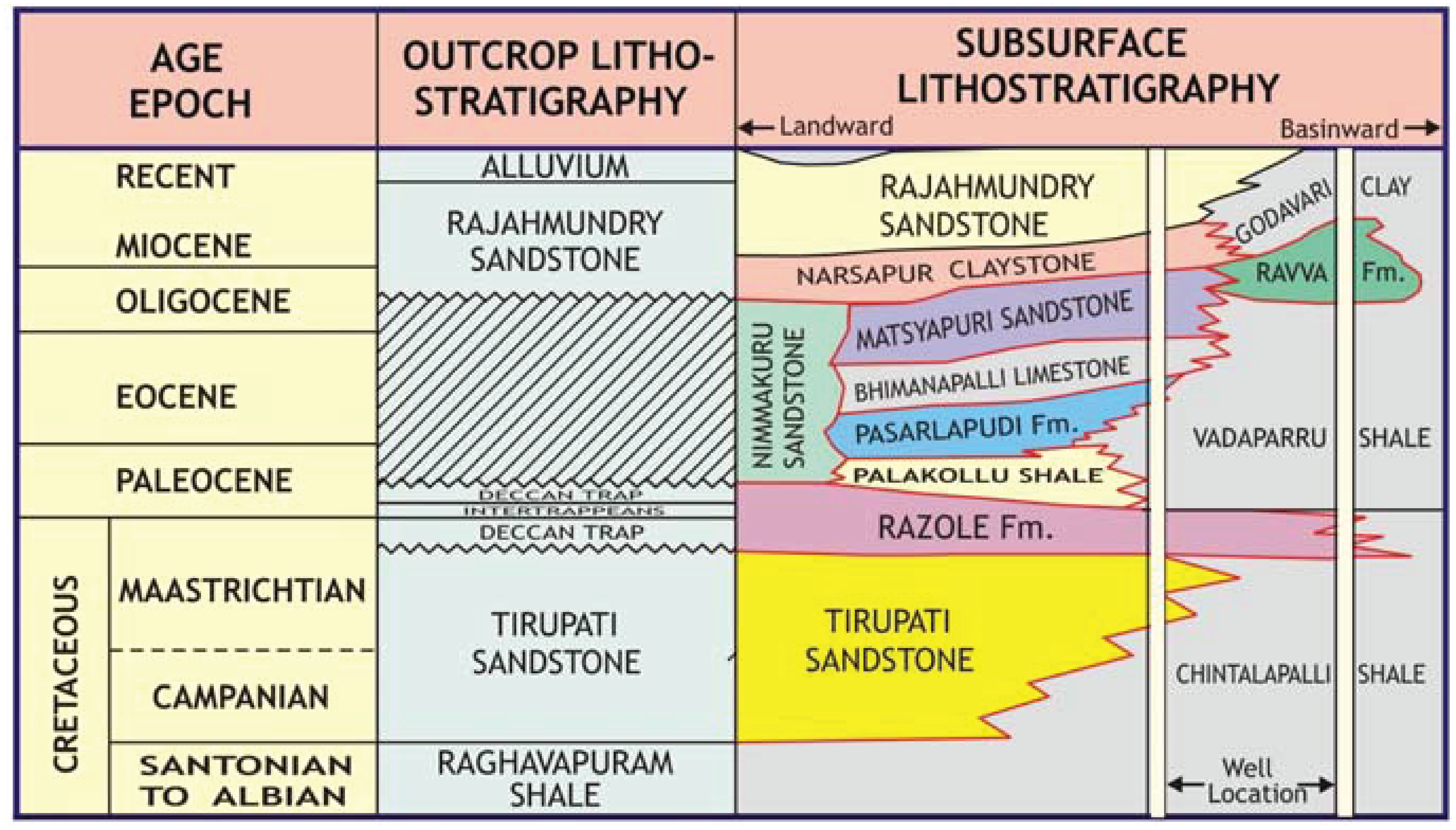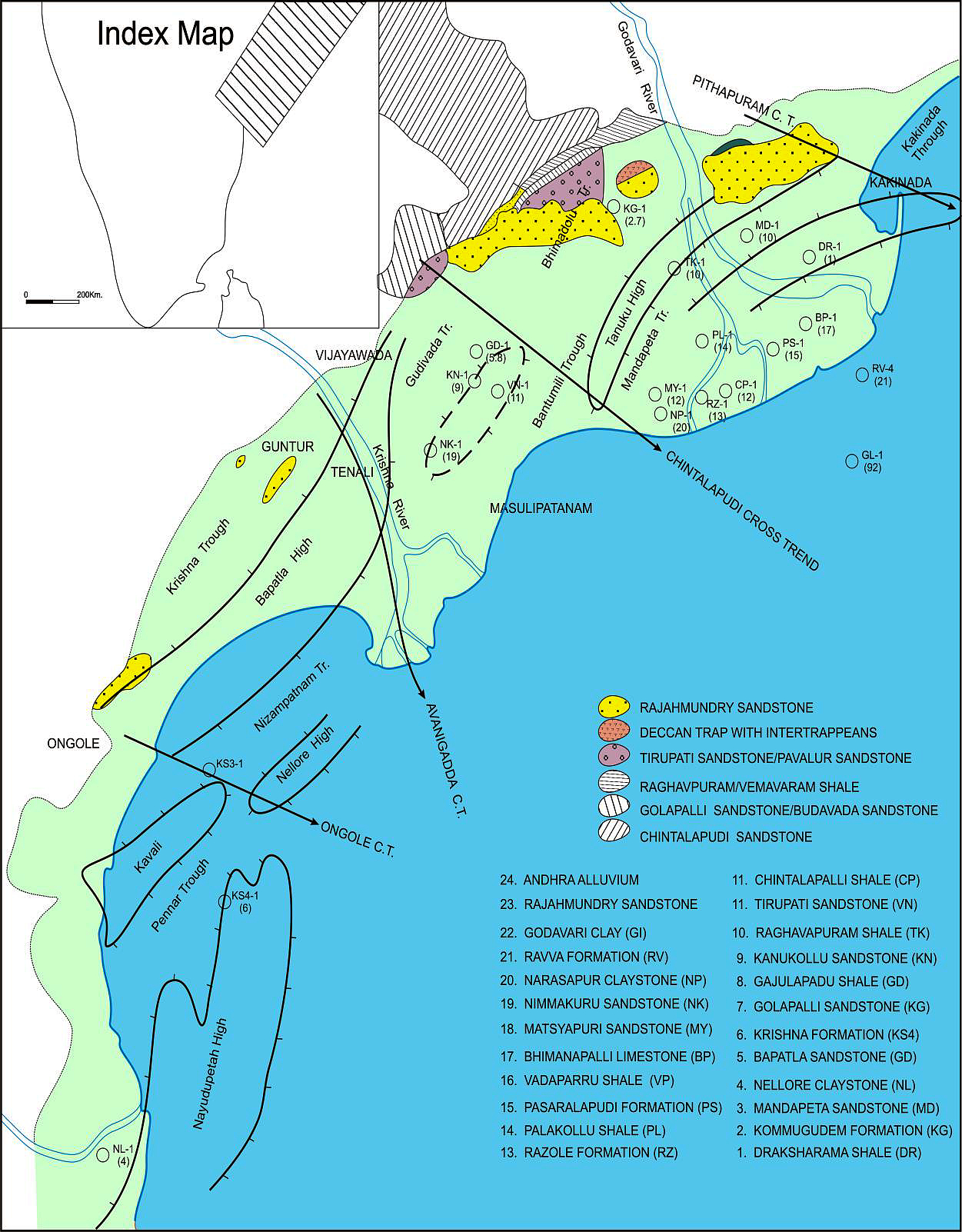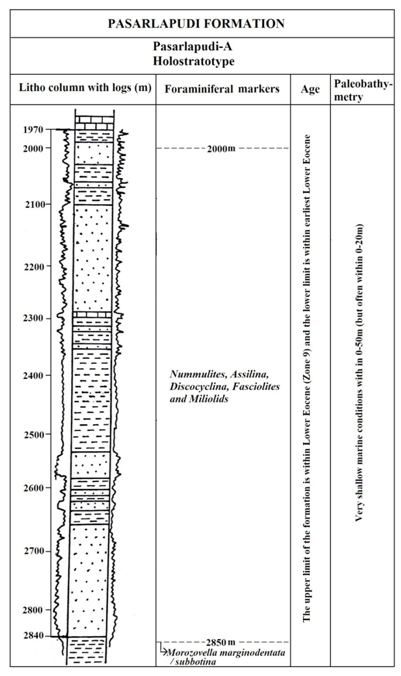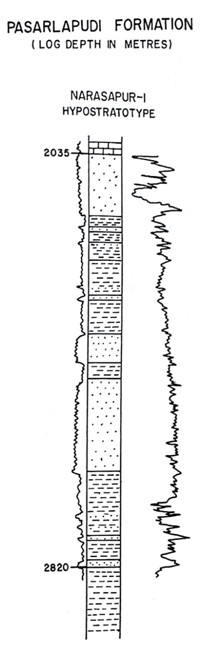Pasarlapudi Fm
Type Locality and Naming
LANDWARD: The type section is in the well Pasarlapudi-A (depth interval:2850-2000m). The hypostratotype is in the well Narasapur-A (depth interval:2820-2035m). It was named after the village Pasarlapudi by ONGC team steered by Venkatarengan et al. (1993) adopted and issued as Document-VII by KDMIPE, ONGC, Dehradun (1993). [Original Publication: Rao, G.N. (1990) Subsurface stratigraphic nomenclature of Krishna-Godavari Basin, ONGC, unpublished report.]. Reference well: Well Narasapur-A, Interval 2035-2820 m and thickness is 785 m.
Synonyms: Pasarlapudi Sandstone
[Figure: Generalized Late Cretaceous-Cenozoic lithostratigraphy transect, Krishna-Godavari Basin. From Keller et al., 2011, Jour. Geol. Soc. India, 78:399-428, their Fig. 2]
[Figure: Map showing the locations of designated holostratotype section for the formation in the KG Basin (After ONGC, Pandey and Dave, 1998) in Raju et al., 2021, ONGC Bulletin, Special Issue, Vol. 56, No. 2]
Lithology and Thickness
Clayey sandstone. This formation consists mainly of alternations of sandstones and shales with thin limestone bands. The sandstones are light grey to greenish-grey, moderately hard and compact, subangular to subrounded, argillaceous occasionally calcareous and fossiliferous. The shales are dark grey, moderately hard and compact, splintery, fissile with pyrite and mica. It has a thickness varying from 765-870m.
[Figure 1: Figure showing Lithocolumn, foraminiferal markers, age and paleobathymetry of the type section of Pasarlapudi Fm, (modified after Venkatarengan et al., 1993)]
[Figure 2: Well log of Narsapur-1 Hypostratotype (modified after Venkatarengan et al., 1993)]
Relationships and Distribution
Lower contact
Unconformable with the Palakollu Fm / Vadaparru Fm.
Upper contact
Conformable with the Bhimanapalli Fm.
Regional extent
It is extensively developed in parts of Krishna-Godavari Basin.
GeoJSON
Fossils
Planktic foraminifera Morozovella marginodentata/ Subbotina plexus and larger foraminifera Nummulites, Assilina, Discocyclina, Fasciolites and Miliolids.
Age
Depositional setting
Middle neritic.
Additional Information
The formation thickens towards the coastal tract of the basin and laterally changes to Vadaparru Fm Shale (Venkatarengan et al., 1993).



